The cab pulled slow and long into the driveway of the ryokan. It was raining, and the torches at the entrance of the hotel reflected orange on the darkened pavement.
I had not planned to go to Niigata – I wanted to go to Kanazawa, or Takayama, or Naoshima, but there was no flight to any of those places that made sense with my short weekend trip up north. So I decided on Niigata: famous for rice and sake, setting of the book Snow Country by Nobel-prize winner Yasunari Kawabata, and across the water from the gold-mining island of Sado. I had found the city on Google Maps, and it seemed like a good place to visit.
By the time I landed it was pitch black, despite only being 6:00pm. It was also cold – Okinawa has been consistently between 60 and 70 degrees farenheit for the past two months, and a part of me had forgotten that it is December. The air ran cold through my nose and throat, but it was comforting in the way that it reminded me of home; for the first time this year, it felt like Christmastime.
I hopped in a cab right outside the terminal. In Japan, the taxis are these 1970s-style sedans with glowing blue or yellow orbs on the roofs to indicate whether or not they are occupied. Inside, the seats are covered with a lace, and the drivers wear formal uniforms with hats and white gloves.
After an hour long drive to my hotel – listening to winter music like “So Much Wine” by Phoebe Bridgers, “White Winter Hymnal” by Fleet Foxes, and “Ivy” by Taylor Swift – I lugged my suitcase inside, where I was greeted with an empty lobby and the soft sound of piano music. I walked up to the front desk, where there was one man in front of me waiting for the concierge to arrive. He turned to say hello.
“日本語は大丈夫ですか?” he said.
(Is it ok if I speak Japanese?)
“はい. 少し 日本語,” I replied.
(Yes, I know a little Japanese.)
“どこの出身ですか?” he asked.
(Where are you from?)
I was pleased that I could understand him. I can practice my Japanese more when I’m out of Okinawa – it’s noticeable how many fewer people speak English in places like Kagoshima and Niigata.
“アメリカ. ニューヨーク.”
(America. New York.)
“すごい,” he said. “温泉は好きですか?”
(Amazing. Do you like onsens?)
“はい、温泉が好きです.”
(Yes, I like onsens)
I was staying at an onsen ryokan in the mountains about an hour outside of downtown Niigata. I had had this vision of going to the onsens in Kagoshima while the leaves were changing, but when I arrived, the leaves had not yet turned, and the outdoor onsens were closed. I decided to make up for that in this trip.
Once the concierge arrived, the man turned away to get his key. When it was my turn to speak to the concierge, I could no longer understand Japanese. We had to use Google translate to get across the more specific details: when I’m leaving my room tomorrow so that they can clean, which rooms are for what meals, when they will set up my futon, etc. He told me that I can take a robe from the rack to the left, but I was carrying all my bags so I didn’t take one.
On my walk to the elevator, I noticed that the hotel felt dated in an early 2000s kind of way – I thought to myself that it’s funny that the 2000s can now feel dated. There were dings on the wall, and the handles of the doors and buttons in the elevator were worn down. The hallway was dark and the teal carpet was clearly several shades darker than it had been when it was first laid. It was also eerily quiet – I started to question if it was worth me coming all the way here.
The elevator doors opened to a dimly lit landing. As I walked down the hallway to my room, the beige curtains drawn and the short, thin hotel doors with black cursive numbers passing by in succession, I was reminded of The Shining. I’ve only seen part of it, but from what I remember, the movie certainly played up the disorienting, disquieting feeling of being alone in a dimly lit carpeted hallway of a remote hotel.
I struggled to open the door to my room. It was a physical key, which I haven’t used in a while, and I was a little embarrassed at my ineptitude – luckily there was no one there to witness it. When the door finally swung open, I found that my room was just a square, with the floor entirely covered with a tatami mat. My bed, a futon, was not yet set up; they said that they would come set it up while I was at dinner.
I dropped my stuff on the floor, feeling a little bit at a loss for what I was going to two here for two days; I had yet to plan my weekend. I decided just to head to dinner as soon as possible.
I retraced my steps through the maze of liminal space and took the elevator down to the second floor. When I turned the corner underneath the doorway adorned with red lanterns, I saw dozens of shoes laid out neatly on shoe racks. So here are all the people, I thought.
I put on sandals, and when I walked down the hallway, a large banquet hall opened up on my left. Everyone was wearing their patterned robes from the lobby, eating silently as classical music played. It felt like I had been dropped into a scene in Spirited Away. I had suddenly found myself in an alternate universe, one where everyone knew the social rules of dress and conduct, and I was completely clueless. I probably looked ridiculous in my jeans and sweater, and I wished I had taken a robe at the front desk after all. I trepidatiously sat myself down at one of the tables, but then a waitress came up to me and asked my room number; she pointed me to my correct table, which was already set with shabu-shabu.
There was something kind of poetic in the silence and solemnity of the dining hall. When people did speak to one another, they spoke softly, their glasses clinking on the tables and shuffling to the buffet in their socks and slippers. I decided to start reading Snow Country on my phone – it’s about a man who goes to an onsen in Niigata to visit a geisha and escape the city life.
I also ordered a glass of sake, since I figured I should have the Niigata speciality in Niigata.
I was heartened to see other people in the hotel – it confirmed that this place was, in fact, someplace worth visiting. Hearing the little kids giggling at their tables and the groups of friends pouring miso soup into their bowls beside me made me feel much more at ease. Even the simple act of existing next to other humans seems to allay feelings of isolation.
After dinner, I decided to go to the onsen in the hotel. Onsen culture in Japan is similar to Scandinavian bath houses, except everyone is naked, and the onsens are focused more on hot springs than saunas.
The first time I went to an onsen, I was nervous to take off my clothes; I wasn’t sure if people really were completely naked or if that was just for young kids. But once I noticed that other women were confidently walking around, I became much more comfortable. It’s quite freeing to walk around and have your naked body not be inherently sexual – you are free to just simply exist.
The onsens are a very intergenerational space: there are old women, young women, teenagers, and children, all sharing the experience together. In America, we often talk about body representation in terms of size, but being in the onsen, I realized how little exposure I’ve had to bodies in different stages of aging. I thought about how it might be to have grown up as a little kid seeing women in all stages of life, a glimpse into what my body might one day look like.
The onsens also have saunas, which are just normal saunas, except a lot of them have TVs inside. Everyone sits silently side by side intently watching the show on an old, boxy TV hidden behind glass while the audio plays from a small speaker in the corner.
This onsen had a natural hot spring outside; when I opened the door, a rush of cool air came over me, and I had to run a bit on the rocks so I could get into the pool faster. I quickly sank into the warm water, submerging my body until the water reached my chin. The wind rushed through the leaves, still tinged with a tiny bit of green amongst the red. They were illuminated by bright outdoor lights, contrasting against the dark sky. I was struck by how accurate the description of nature in Snow Country had been, and I decided to make this newsletter a little more literary than I have in the past.
When I returned to my room, I found my futon laid out on the floor next to the table. I had never slept on a futon before; I curled up under the duvet and sunk into the glow of my phone, reading more of Snow Country.
Right when I was about to go to bed, I got a text from a high school friend of a guy I went to college with. We had been put in touch because he’s teaching English in Tokyo. I had mentioned to him that I was going to Niigata, because he told me to tell him when I was taking any weekend trips.
His name is Charlie – he told me that he had decided very last minute to come to Niigata and that he’d be there tomorrow afternoon. I was a bit relieved to have some socializing planned for the weekend, and I told him I’d meet him in the city the next day.
Before I went to bed, I did a quick survey on Google Maps to plan my day: I decided in the morning, I would start at Yahiko Shrine, then take a cable car up to the top of Yahiko Mountain. Afterwards, I would go into the city of Niigata, go to some small museums, and then play it by ear from there.
When I woke up, I was very happy to see a beautiful landscape out of my hotel window. It had been dark the night before, so I honestly didn’t even realize that I was in the mountains.
By the time I got in the cab to Yahiko Mountain, though, it had started snowing, concealing the red treetops from view.
When I got to Yahiko Shrine, the snow really started to come down. It was magical to witness the snowflakes settling on the roof of the shrine for the first time in the season.
People use umbrellas in the snow in Japan, as well as for sun and rain, which seems fairly logical. My umbrella was not enough to protect me from the elements entirely, though; my boots were supposed to be waterproof, but the sole was coming apart from the shoe, so my toes were starting to get really cold.
Not only is Niigata famous for sake, but sake is used for sacred offerings at many shinto shrines, which is why they are displayed in this way. The site of Yahiko Shrine has been a holy place for thousands of years, and I thought to myself that Niigata certainly feels more traditionally “Japanese” than Okinawa.
After walking around the shrine for a bit, I walked through a footpath in the woods towards the cablecar that went to the top of Yahiko Mountain. I wasn’t really sure what to expect, but I figured that I could rest at the cafe at the top of the mountain.
When I arrived at the desk, the ticket officer started talking to me in Japanese, which I understood.
“次の車は 20 分後の 9 時 45 分です,” she told me at the counter.
(The next car is in 20 minutes at 9:45).
When I got to the cable car, I asked the operator where the bathroom is, she said, “自動販売機の右側の階段を降りたところにあります.”
(It’s down the stairs, to the right of the vending machine).
I once again understood exactly what she said, which I was very happy about. When they taught us the word for vending machine in class, I honestly thought I would never use it.
“あなたの日本語は上手です!” she said.
(Your Japanese is good!)
“ありがとうございます,” I replied.
(Thank you!)
But once the cable car starting climbing up through a flurry of snow, the operator spoke in Japanese – presumably about the mountain and the region – and I didn’t understand a word. Despite not knowing what she was saying, I felt rude putting in my AirPods, so I just sat there and smiled and nodded.
At the top of the mountain, I opened up my umbrella and walked up to the cafe near the cable car terminal. I tried the door, which was shut, and quickly realized that it was closed. I wasn’t sure what I was going to do at the top of this mountain; the snow made the visibility poor so there wasn’t a view, and I had nowhere to sit. Off to the corner, I saw a sign for a shrine that pointed into the woods, so I decided to follow it.
It was snowing harder, but I decided to embrace the numbness in my toes. The loss of feeling in my feet, the cold wind on my cheeks, and the snow beating down on the cable car made me excited to go skiing in Hokkaido in a few weeks.
There were a couple of other people on the path with me, all older men who were also hiking alone.
The shrine at the top was a small shinto shrine, much smaller than Yahiko Shrine. I clapped twice and bowed before heading back down to the cable car.
Once I got to the bottom of the mountain, I decided to walk to the train station, and then take the train into the city of Niigata. By this point, the snow had mostly ceased.
There were warm-water sprinklers on the streets, which are used to melt snow. It’s called a shosetsu system – I had to use my umbrella to shield myself from the water at some points.
It was very pleasant to take the train into the city, which took about 45 minutes, but it was just a typical commuter rail car, not the plush-seated bullet train that I had been envisioning.
As I looked out the window, I thought about this passage from Snow Country in which the main character, taking the train to Niigata, watches the reflections in the window:
In the depths of the mirror the evening landscape moved by, the mirror and the reflected figures like motion pictures superimposed one on the other. The figures and the background were unrelated, and yet the figures, transparent and intangible, and the background, dim in the gathering darkness, melted together into a sort of symbolic world not of this world.
– Yasunari Kawabata in Snow Country
It’s pretty cool to be able to read a book and then see descriptions from that book play out in real life.
When I arrived in Niigata, I walked to Saito Villa, an old home in the city that is now a museum. I took off my shoes to enter, and the creaking wooden floorboards were cold beneath the toes of my wet socks. The windows were thin, and there was no heating – I wondered how the family that lived here made it through the Niigata winters.
I loved the cut-outs in the windows, and the way the windows acted as frames for the garden outside. The brilliant fall foliage glowed red and orange and yellow and green.
I stopped by another couple of house-museums in the area, although none were as nice as the Saito Villa. Right when I had run out of activities from my itinerary, Charlie texted me saying that he arrived. We agreed to meet at a street corner halfway between his hotel and the museum I was in.
It felt completely random—and a bit absurd—that I was meeting this guy I’d never met before in a city that would never appear on anyone’s travel guide for Japan. But being here has made me much more open to trying new things and meeting new people.
When we met on the corner, I was surprised at how tall he was - he had to bend down to hug me hello. He told me that he’s staying in a super tiny room in a corporate hotel in the city. We laughed about how we were probably the only foreigners in the entire city, but agreed that there was something refreshing about being in a place where everyday life unfolds unfiltered, completely untouched by tourism.
“It’s just like Detroit,” he said. “I love it.”
I thought that that was a funny comparison, but he said he had just been in Detroit for the football draft with his best friend from middle school, who happens to be someone I went to high school with. Charlie also went to boarding school, so we have a lot of mutual friends and general social overlap.
He’s living in Tokyo teaching English at a language school. He asked me what kind of people are at my school, and I told him about Daniel, who was born in a Mayan village in Ecuador, speaks five languages, and has been to 21 countries; and Vep, who worked on Season 3 of Emily in Paris. In addition to an assortment of people who are just interested in learning Japanese, there are also a lot of Nepalese people who are trying to immigrate to Japan, as well as a few military members.
I told him how it’s been interesting to meet so many people in the military. I explained that before going to Okinawa, I didn’t really realize that people would choose to be in the military without being actively enlisted. It’s an entire economic ecosystem. They need doctors, lawyers, teachers, receptionists, and managers for Teen Centers, as well as people to maintain planes and staff customer service lines. It truly functions as its own self-contained world.
There are also some people who are in Okinawa for military reasons, but not directly a part of the military. One woman in my class is in Okinawa because her ex-husband is in the Marines; her kids live with him and his new wife on the base. She is in Okinawa to be near her kids, and being in my school allows her to live in Okinawa on a student visa. She gets her kids on the weekends.
She’s also an alcoholic; I found out one day during class break when I went to the 7/11 to get my daily coffee and Spam and egg musubi (it’s a classic Okianwan snack that is a combination of onigiri and Spam, a true representation of the blend of Okinawan culture and the American military). She was in the checkout in front of me buying vodka and orange juice at 10:00am; the next day, I saw her doing it again. Each time she went to the bathroom to drink it before starting class again.
It’s very sad, but she is a really nice person, and her situation seems like a difficult one to be in. Being in Okinawa for the military is very different both legally and socially than being in Okinawa for any other reason – it must be strange to be on the island for the military but not be a part of it.
Charlie also said that he’s been meeting a lot of new people who have lived completely different lives than himself. He told me about his coworkers – many of them are American or Canadian and are living in Japan because they are obsessed with anime. He said that some of them clearly struggle with mental health, and watching anime has been an outlet for their social anxiety. Others have explicitly told him that they want to have a Japanese girlfriend because of their love of anime, which seems to me to be rooted in a fetishization of Asian women.
“It’s kind of wild to be working with people like that, but it’s probably good for me,” he said. “Soon we’ll be back to ‘Where do you live in New York?’ and ‘What boarding school did you go to?’”
Charlie and I rounded the corner past smoke towers and an industrial port to go to the Niigata City History Museum. It was honestly a pretty small exhibit, but the outside of the building was pretty.
After the museum, we noticed a giant crowd was gathering around the glass building across the river. Earlier at the reception desk of one of the museums, I was chatting with the woman at the desk, and she told me that there was a concert in Niigata that night for King & Prince, a J-pop boy band that is popular with girls my age.
I said it must be the concert. As we walked closer and saw hundreds of teenage and 20-something women dressed up with posters for King & Prince.
Idol culture is also something that I haven’t been exposed to much in the U.S., but one of my friends in Okinawa is very into K-pop, so he’s told me a little bit about how it works. There’s a very fervent sense of ownership in K-pop – my friend told me that when you buy their album, you get a keychain with one of the idol’s faces on it, and this becomes “your” idol. K-pop artists aren’t allowed to date, drink, or essentially have any personal life at all – their public persona is their sole identity. Many of them leave school as early as age 12 to train for years under talent management companies, all in the hopes of being selected to join a musical group. The same is true for J-pop.
As we walked past the throngs of King & Prince fans, we talked about this fervent fandom culture. Charlie told me how one of his coworkers is obsessed with a genre of Japanese music called visual kei – it’s a super niche goth punk rock genre. The band she likes isn’t very famous, so all the fans know each other, and the band knows their fans as well. She told him how she was flirting with one of the band members a few weeks ago – he was surprised when she showed him a picture of the guy, who was wearing heavy makeup and a giant spiky black wig. Apparently there’s drama because the bassist beat up his girlfriend and might get kicked out of the band – Charlie’s coworker was mostly distraught about this guy’s potential ousting from the band, rather than his actions, since he is her favorite member.
In the U.S., there is a cohort of people who only see Japan through the narrow lens of anime culture; however, even while living here, I’ve had very little exposure to anime. Life is pretty much the same as you would find in any modern industrialized country. You might come to a new country expecting something totally new, but oftentimes you will come to find that people face the same problems and have the same desires regardless of where they’re from. Media consumption, however, can sometimes flatten the complexities of real life and lead people to see a whole nation as a fantasy land.
For dinner, we decided to get omakase, because sushi is supposed to be really good in Niigata due to the quality of the rice. We went to a part of the city that had all these little alleyways with lanterns and bustling restaurants hidden behind unassuming doors. Charlie remarked how different this quaint part of the city was to the industrial and corporate area we had been in before.
At first, we were super picky – we passed by so many places thinking we could find something better. But once we finally decided to start asking for a table, everyone said, “だめ, だめ – full. You need reservation.” We probably asked eleven different restaurants if they had room, and we were turned away each time.
“I’m starting to think it’s us,” said Charlie.
We were about to give up, but then we spotted this sushi place with a beautiful garden. I decided just to try one last time, and thankfully, they not only were able to seat us, but we were able to have amazing omakase at the sushi counter.
We sat next to a guy who is an English teacher at a high school in Niigata on our left, and a mom and daughter who live in Tokyo and are visiting Niigata to see King & Prince on our right.
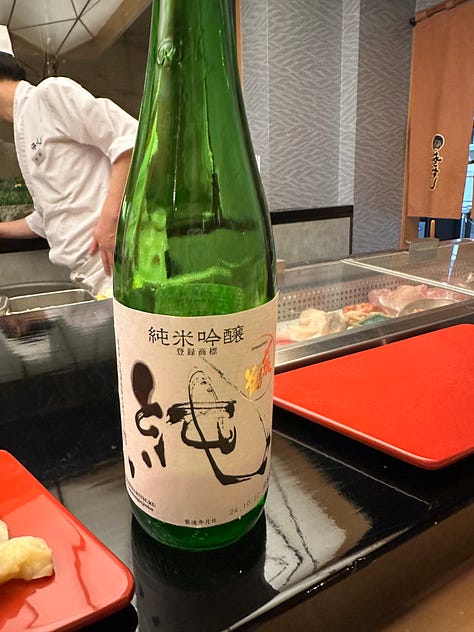
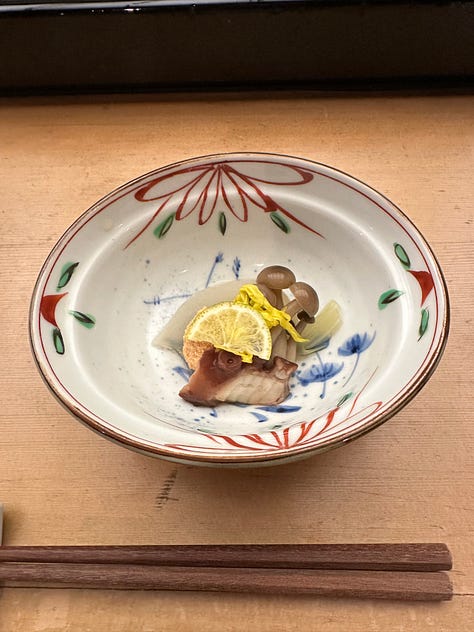
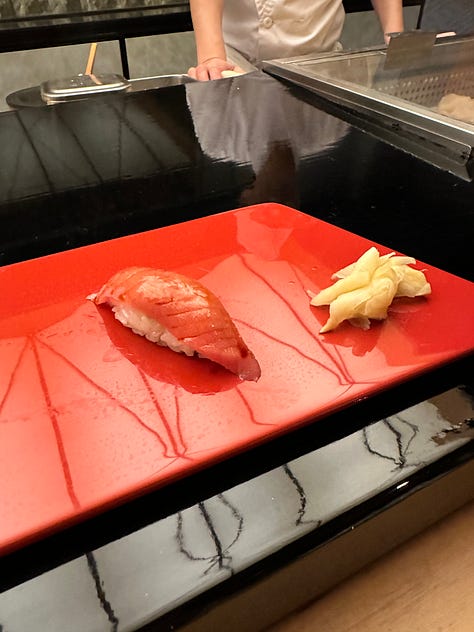
Despite all of our struggles to find a place to eat, this meal was well worth the wait. The sake was amazing, as was the sushi.
While I was at dinner, the ryokan called me to ask why I had missed the hotel dinner. They told me that I had to be back by 11:00pm, since the front desk closes then, and they had taken my key to clean my room when I left. I thought it was funny, but also nice, that the hotel was concerned for my whereabouts and had a set curfew.
After dinner, we went to a wine bar that we had passed earlier. Charlie got red wine from the Czech Republic, and I got white wine from France.
We talked about how we both didn’t use to like cheese, but as we’ve gotten older, our tastes have changed. The roquefort was crazy – it was the strongest cheese I’ve ever had, and it was incredibly tangy and sharp and sour.
At one point, Charlie laughed and said, “We’re going to ruin their business since the only people in here are gaijin. Or I guess you’re not a gaijin, are you?”
“I’m quarta-jin,” I joked.
We talked about how gaijin (literally “outside person”) is more than just a term for foreigner — it carries cultural connotations of being an outsider, regardless of nationality or familiarity with Japanese culture. It’s interesting how being Japanese is as much a racial and cultural statement as it is about nationality.
That led to a conversation about the history of Okinawa. I explained how Okinawans have traditionally seen themselves as distinct from Japanese, partly due to the differences in history, language, and culture; partly due to discrimination of Ryukyuans by Japanese people (there used to be signs saying “No Koreans, No Ryukyuans” in mainland Japan); and partly due to the difference in treatment and experiences during and after World War II. However, this is changing with the younger generation, as Okinawa has now once again been a part of Japan for 50 years.
Living in Okinawa has made me realize how much the modern world order stems from World War II, whether it’s the U.S. military presence in places like Okinawa or the establishment of Israel. That said, I’ve noticed how younger generations, who lack a personal memory of the war, often have political and emotional perspectives that differ from those of older generations.
Charlie shared with me that his great-grandparents were killed in the Holocaust, and he recounted how, when his family visited Auschwitz, he and his dad (who is not Jewish) merely saw it as an opportunity to learn about history. However, his mom, who is Jewish and whose grandparents were Holocaust victims, couldn’t even bring herself to go inside.
I had a similar experience visiting Peace Memorial Museum in Okinawa. I found the museum to be a solemn and sobering experience, given that my grandfather had nearly starved to death in the war, and his brother and many other family members were killed. However, the middle school kids on a field trip next to me were chatting and joking around, treating it as if it were any other museum. For them, the most recent relative with memories of the Battle of Okinawa was likely a great-grandparent—or even a great-great-grandparent.
For older generations, the memory of events like the Holocaust or the discrimination Okinawans experienced in Japan after annexation and during the war often remains central to their worldview and identity, deeply influencing their political perspectives. I saw a statistic showing that support for Israel generally correlates with age, largely due to older generations’ memories of the Holocaust. Similarly, I read about a survey that found that Okinawans who primarily identify as “Japanese” are more likely to support the activities of the U.S. military bases in Okinawa, while those who identify as “Okinawan” are more likely to oppose them.
Experiencing the lingering, visceral presence of World War II can profoundly shape identity and political perspectives. But if the world order is built on an intimate knowledge of the war, what happens as collective memory begins to fade, and other issues come to the forefront?
As we move further away from WWII, it will be interesting to see how changing elements of identity, perspective, and public sentiment contribute to global politics on a large scale.
That’s all for now,
Alexandra ❤️







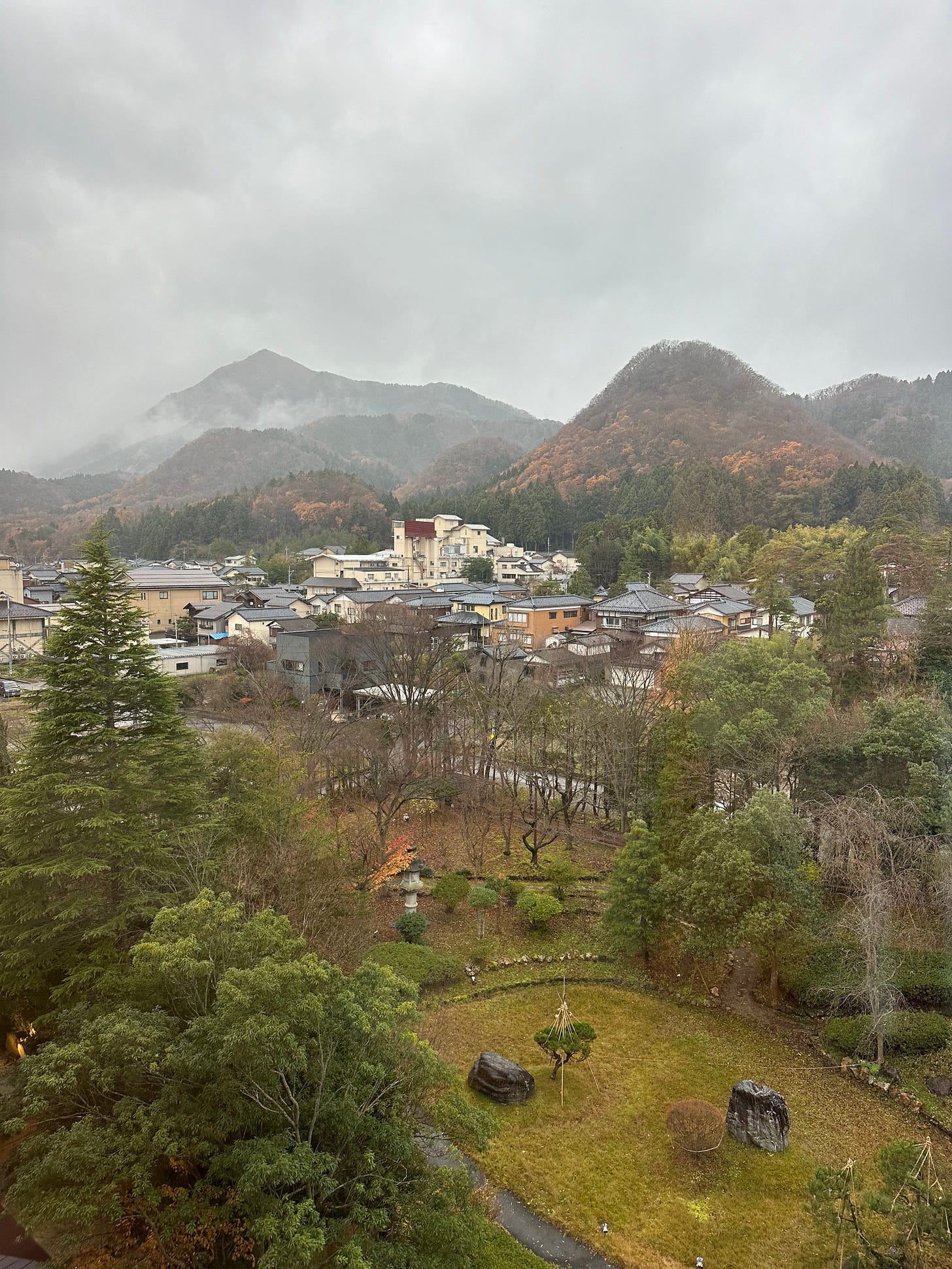
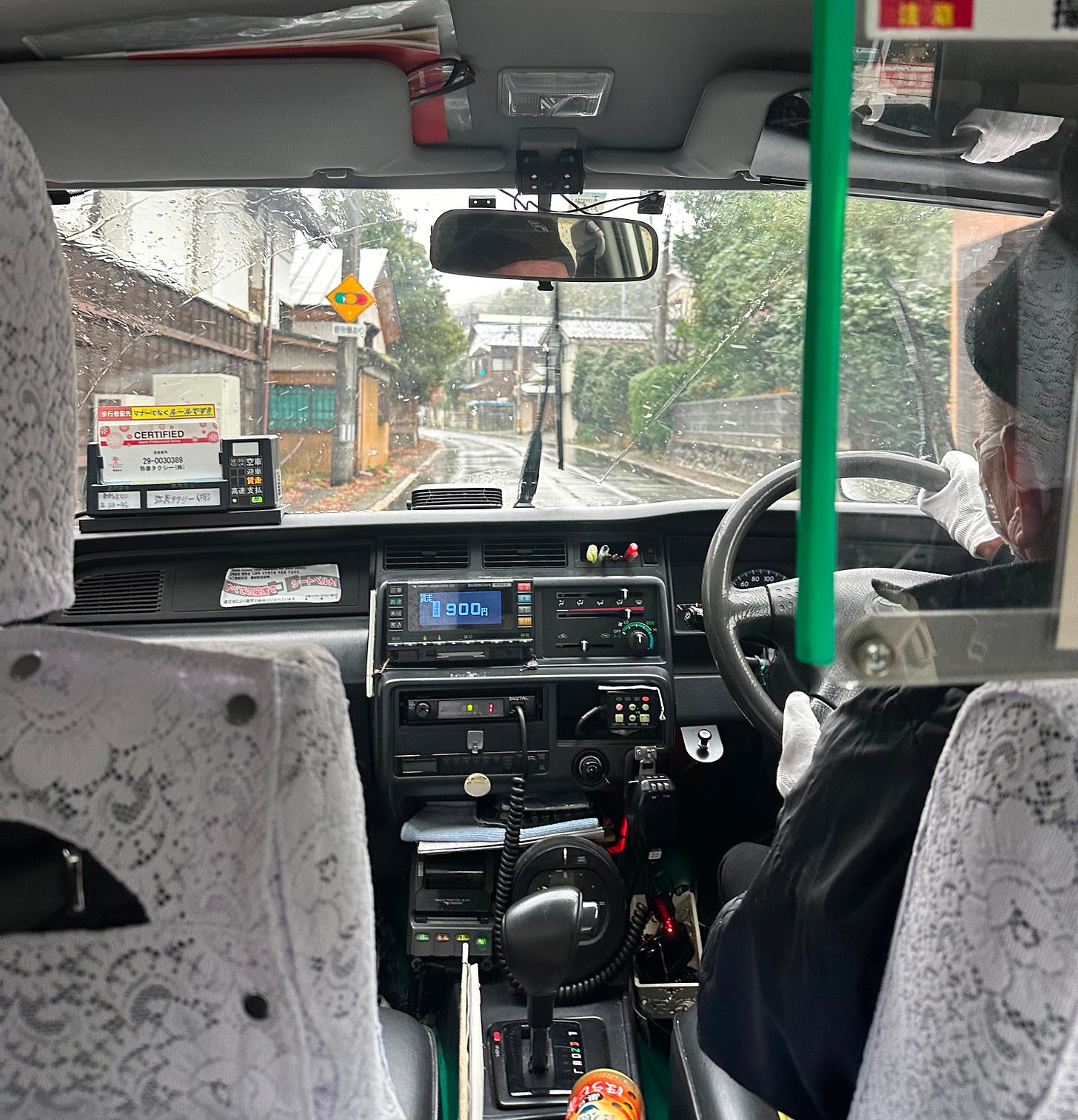





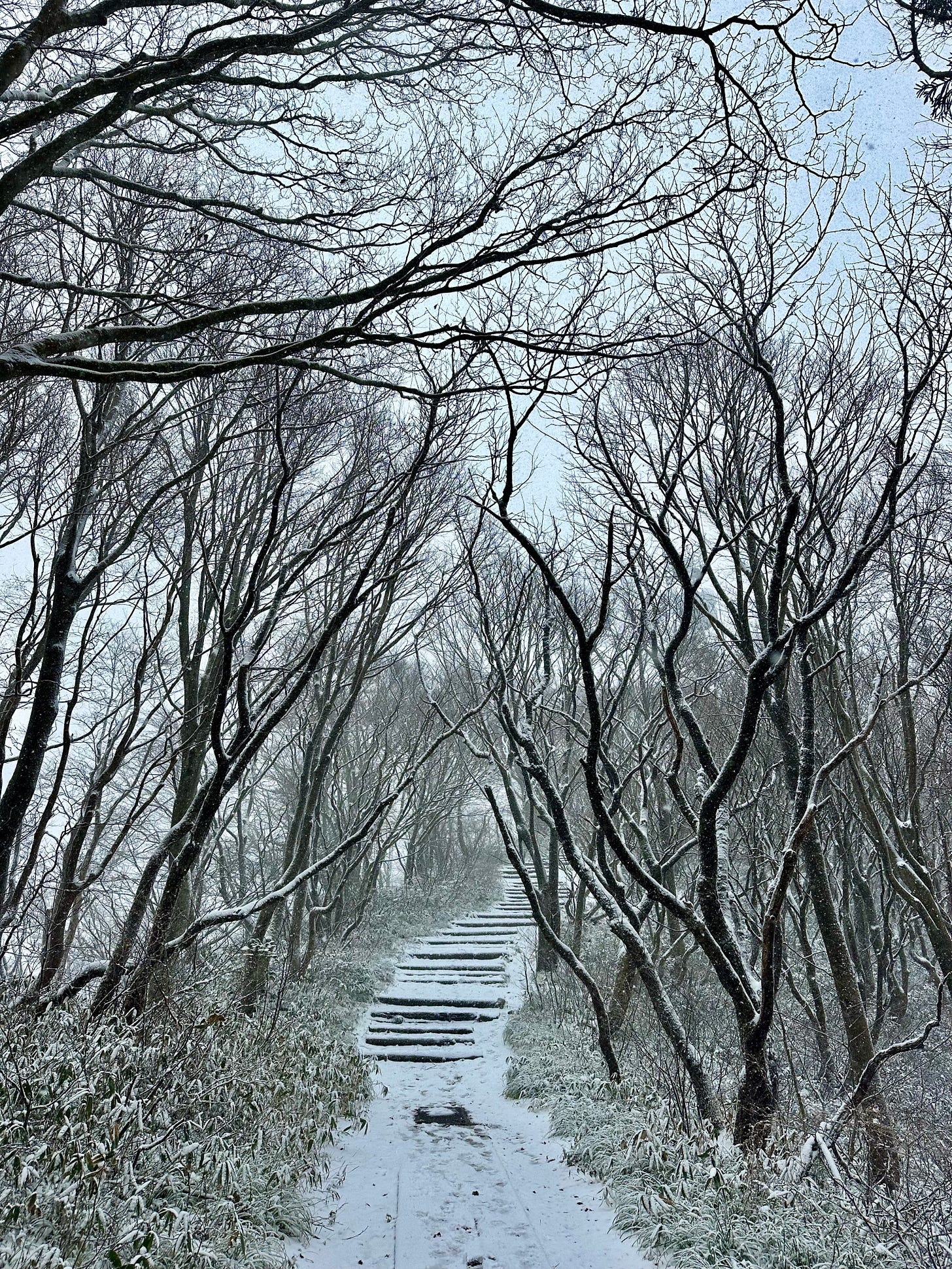
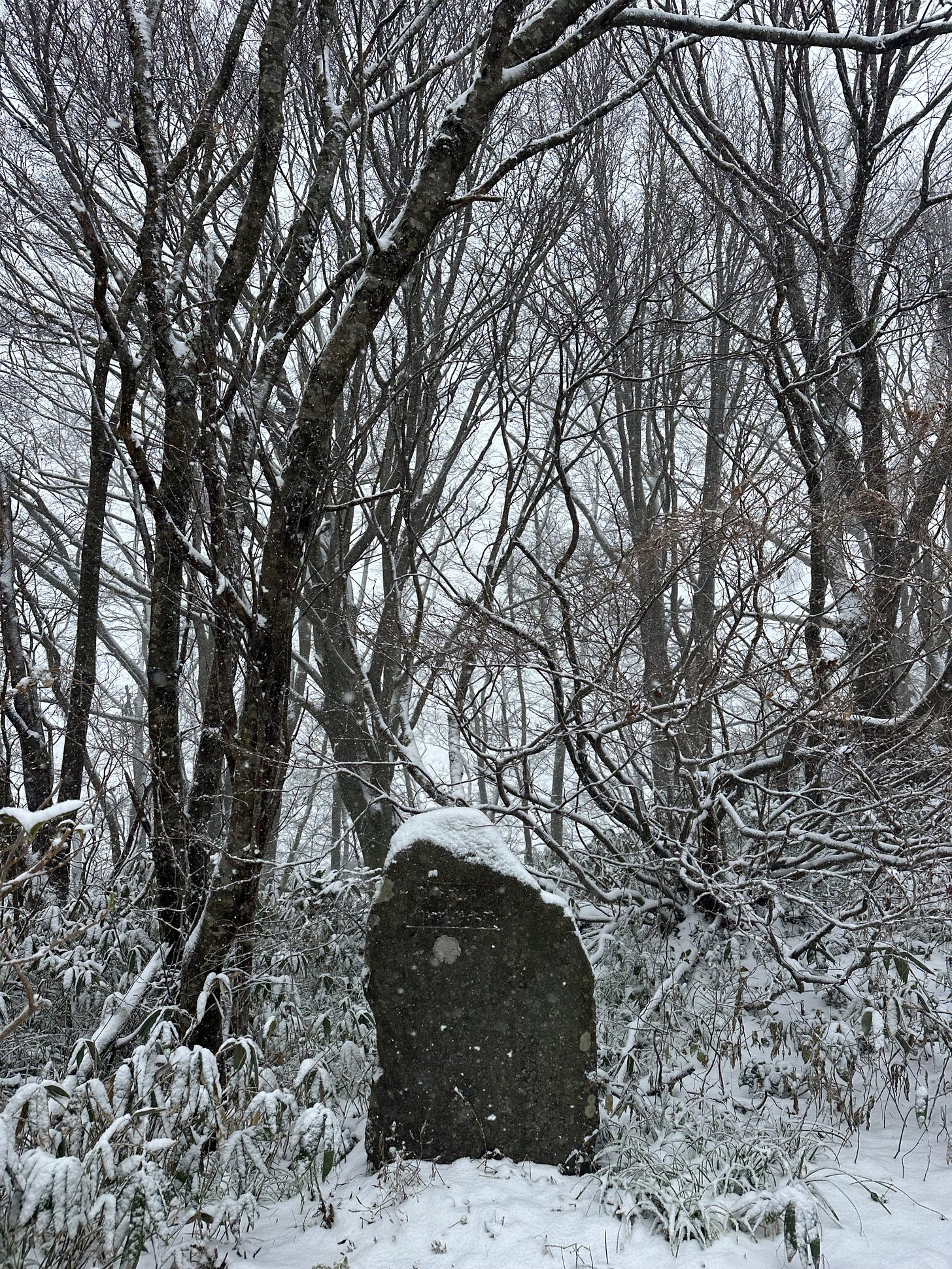


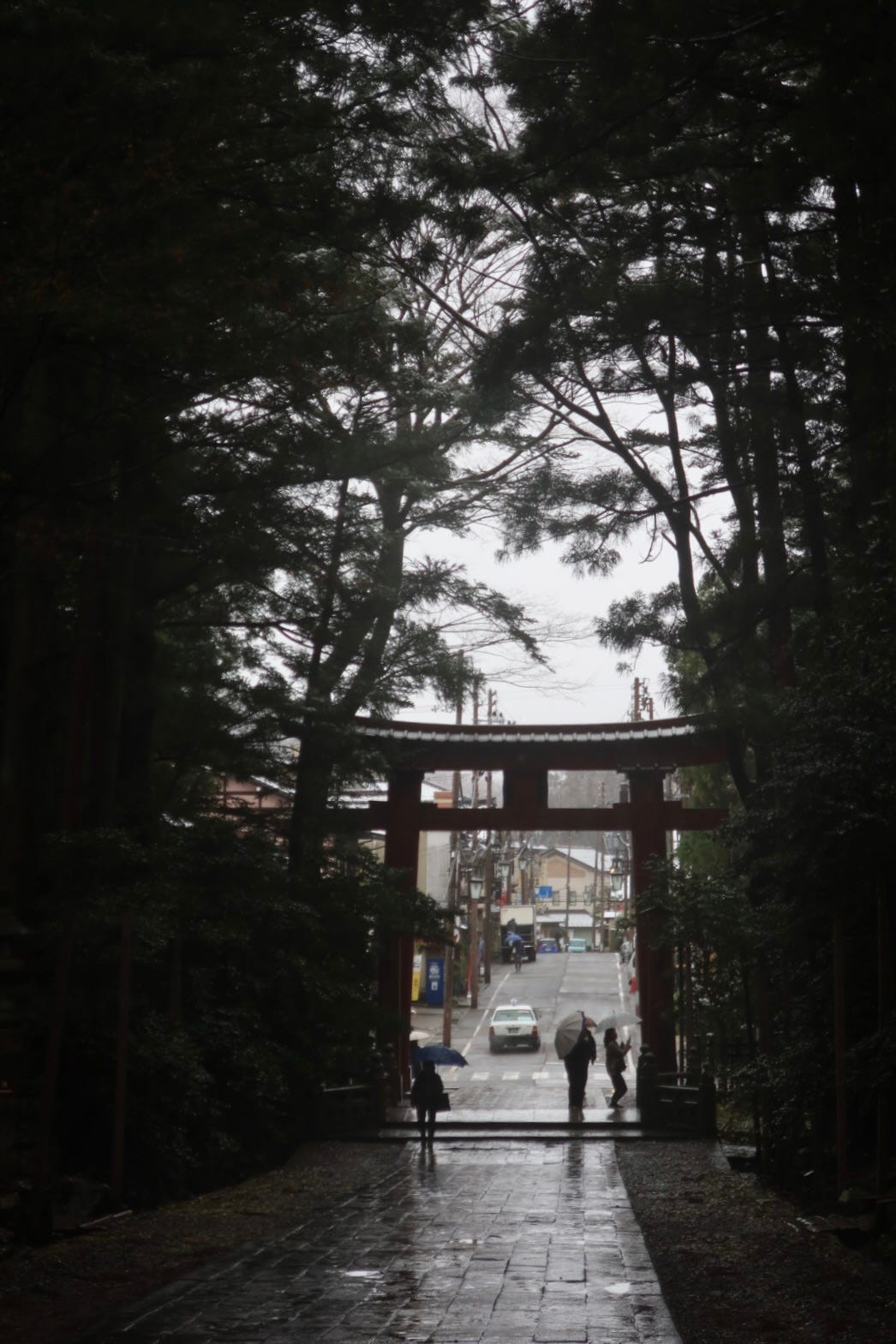

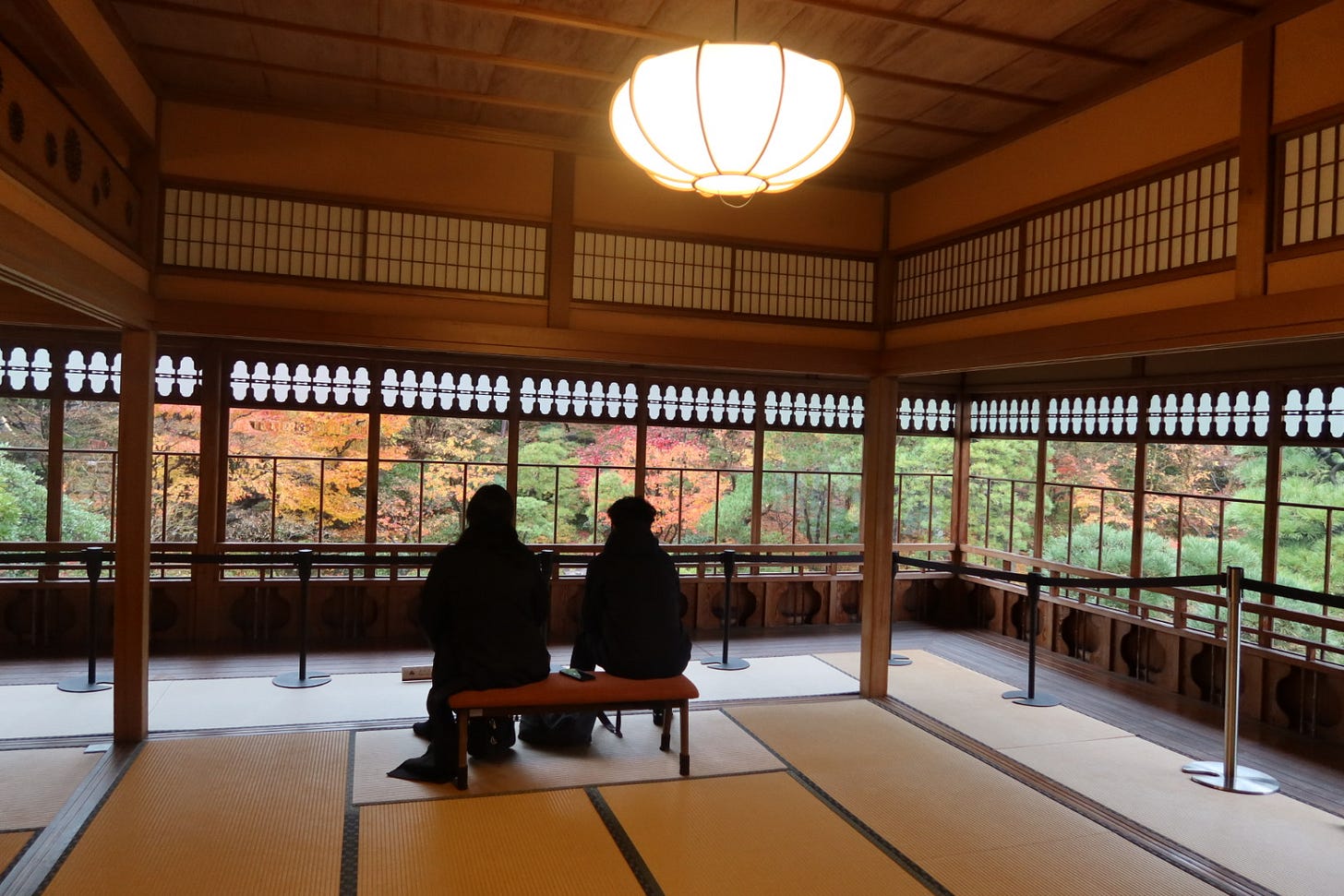

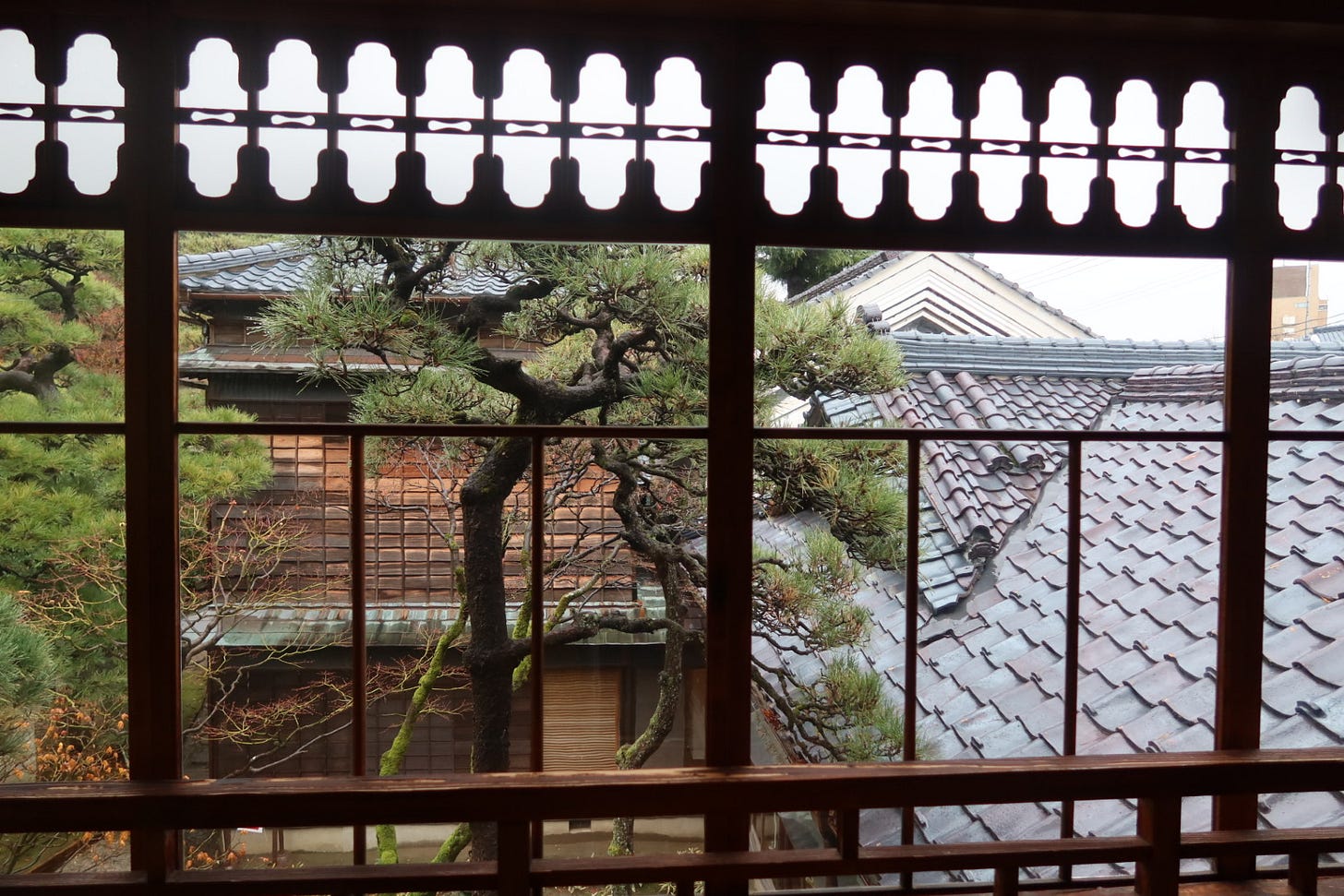


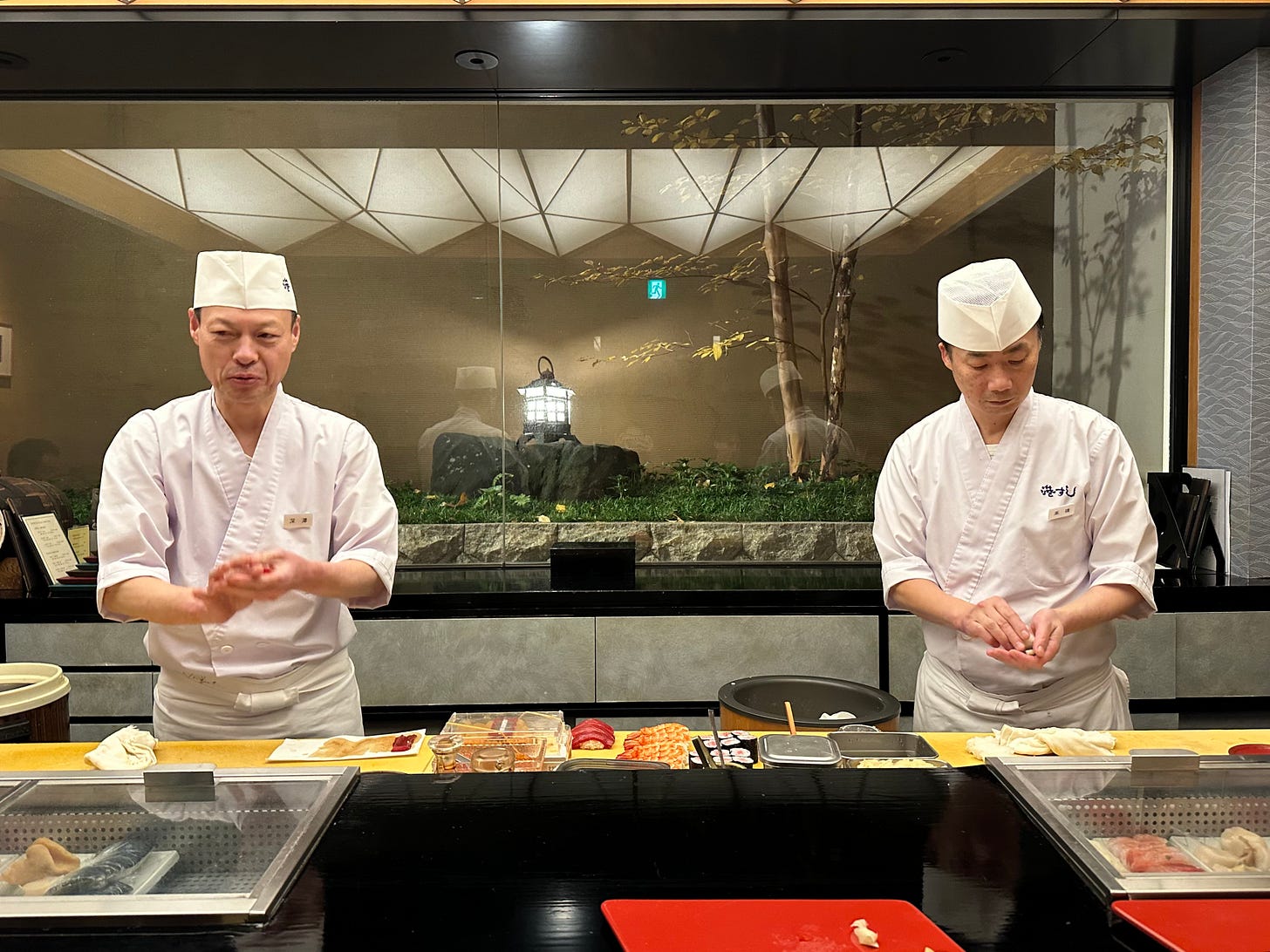
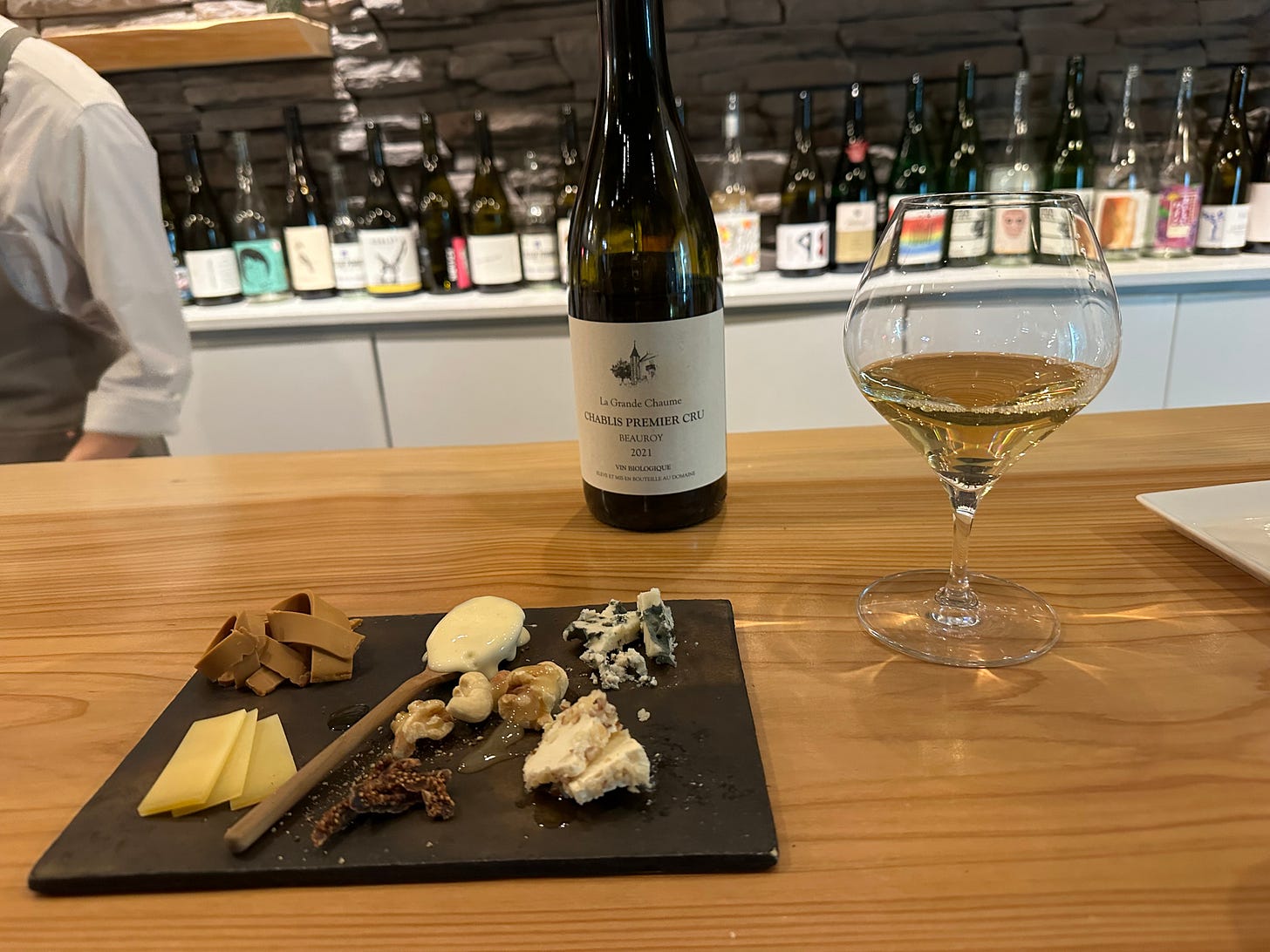
i loved reading this aloo! you’re an amazing writer 🫶 i love you!
Your writing is vivid. We travel with you. Gorgeous photos!
Meri Kurisumasu!
Jock